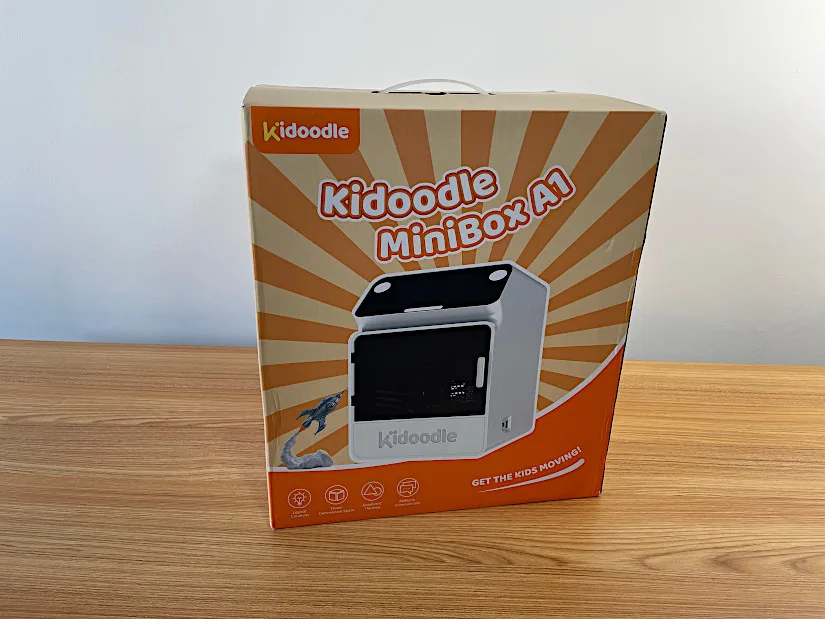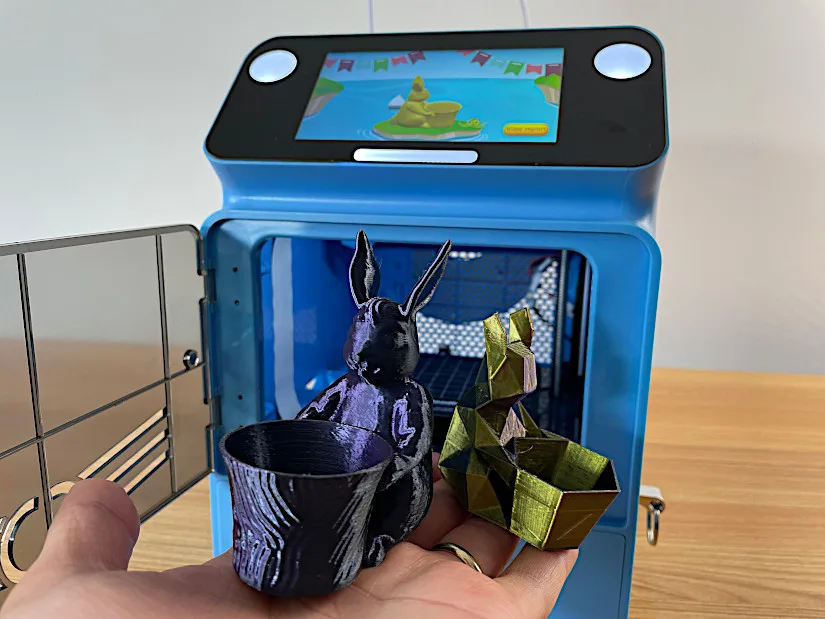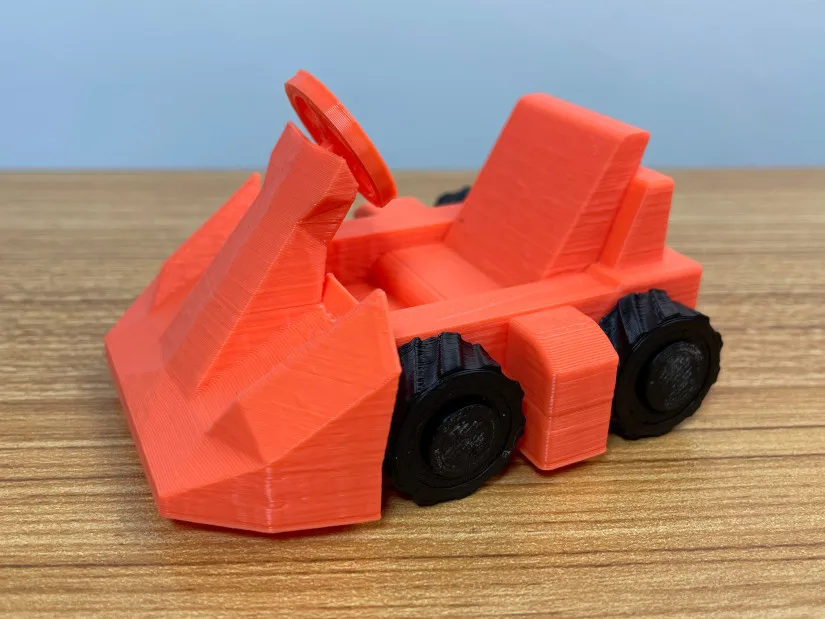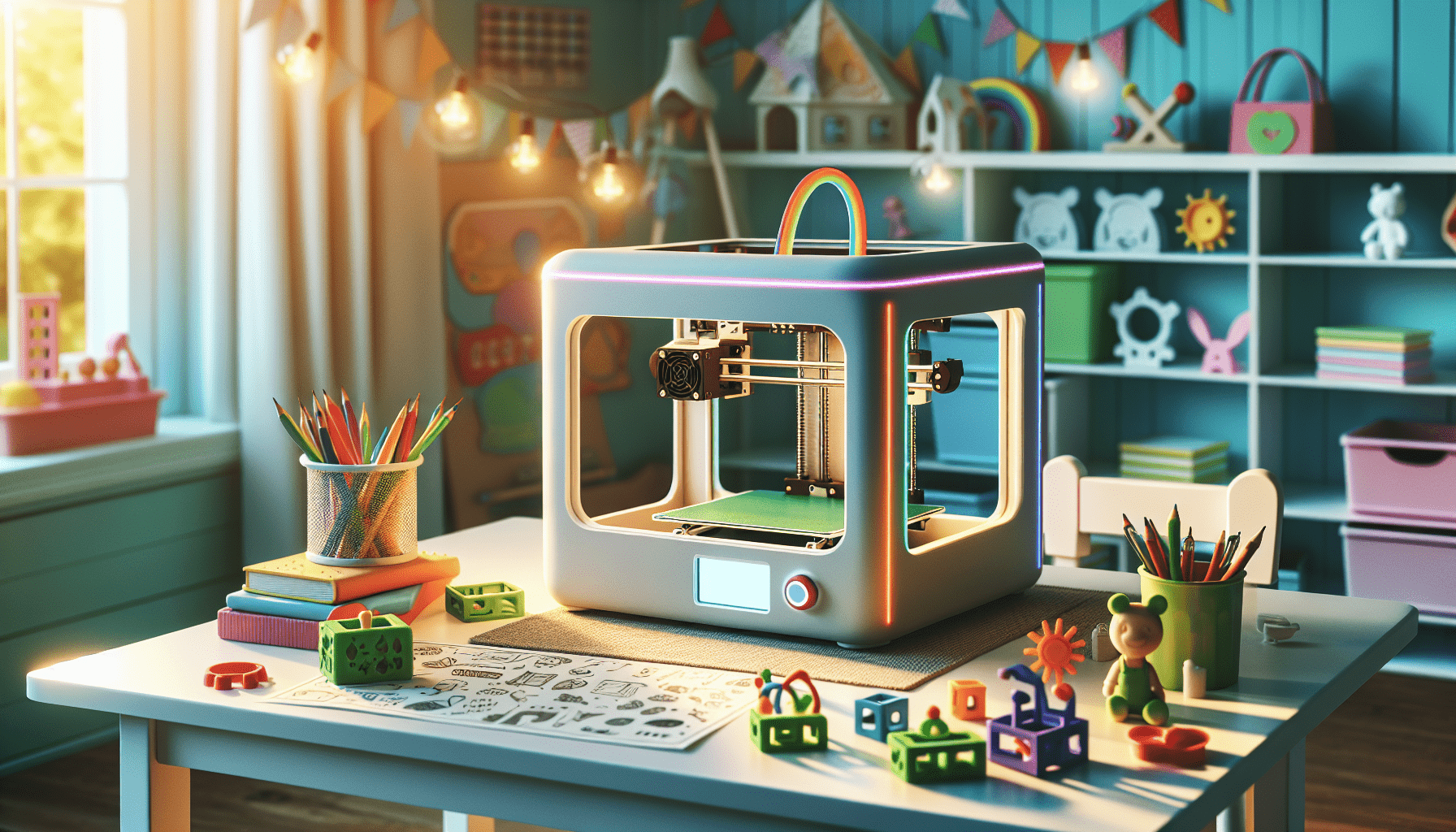Creality Ender 3 V3 SE 3D Printer, 250mm/s Faster Print Speed CR Touch Auto Leveling Sprite Direct Extruder Dual Z-Axis Auto Filament Loading Ender 3 Upgrade 3D Printer Print Size 8.66x8.66x9.84 inch
$219.00 (as of March 8, 2025 20:51 GMT +00:00 - More infoProduct prices and availability are accurate as of the date/time indicated and are subject to change. Any price and availability information displayed on [relevant Amazon Site(s), as applicable] at the time of purchase will apply to the purchase of this product.)Welcome to an exciting journey into kid-friendly 3D printing with our “Kidoodle MiniBox A1 Review: Kids 3D Printer with Safety Features.” As 3D printing becomes more accessible and safe for educational environments, Kidoodle’s MiniBox A1 emerges as a standout option designed specifically for young users. Launched through a Kickstarter campaign, this vibrant and user-friendly device boasts an extensive library of educational models within its companion app, allowing children to create everything from letters and numbers to intricate animal figures. Throughout this review, we delve into the MiniBox A1’s impressive capabilities, unbox and assemble the machine, test some captivating prints, and, most importantly, highlight the comprehensive safety features that make it ideal for kids, always under adult supervision. Get ready to discover a new way to learn and play with 3D printing! Have you been contemplating a creative and educational tool for kids, one that combines fun and safety in the realm of 3D printing? The Kidoodle MiniBox A1 might just be the answer you’re looking for. This review will walk you through the various aspects of this kid-friendly 3D printer, highlighting its features, capabilities, and its potential as an educational tool. Let’s dive into the world where young minds can transform imagination into tangible creations while ensuring their safety.

$30 off $400+ Anycubic Products with code AC30OFF
Kidoodle MiniBox A1 Specifications
Understanding the specifications of the Kidoodle MiniBox A1 is crucial to grasp its capabilities and limitations. Here’s a detailed look at what this 3D printer offers:
- Printing size: 100 x 100 x 90 mm (3.93 x 3.93 x 3.54 inches)
- Platform: PEI Magnetic Flexible Sheet
- Nozzle temperature: Max 250°C
- Printing Speed: Max 600mm/s, Silent Mode Speed 100mm/s
- Touchscreen: 4.5 inch horizontal color screen
- Connection: USB/WiFi
- Extruder: Dual-Gear Direct Extruder
- Bed leveling: Self-check, Auto calibration
- Filament Runout Sensor: Yes
- Firmware: Marlin 2.0
- Recommended materials: PLA
- Price: $129-$279 (Early Birds Price: -46% OFF)
Given these specifications, the MiniBox A1 offers a robust and child-friendly 3D printing experience, designed with both functionality and user safety in mind.
Unboxing and Assembly
Bringing the Kidoodle MiniBox A1 to life starts with unboxing and assembly. Here’s a step-by-step recount of what you can expect:
Neat and Tidy Packaging
The 3D printer arrives in a well-branded box that screams readiness to gift, thanks to its compact and presentable nature. It’s a breeze to move around with a handle included in the packaging, making it hassle-free for both you and your child.
Included Accessories
Kidoodle ensures you have everything you need right out of the box:
- 250g of filament
- Power adapter
- Glue stick
- Hex wrench keys
- USB stick
- Tweezers
Protective Measures
The enclosure is filled with protective foam, safeguarding the extruder and heated bed elements during transit. The accessories are snugly placed, ensuring that setting up is straightforward and stress-free.
User Guide and Interface
Though the user guide wasn’t available in paper at the time of review, all necessary instructions and manuals are conveniently found on the USB stick and via the app. The user interface, designed to be very kid-friendly, is accessible and intuitive, with all the necessary functions neatly laid out on the 4.5-inch touchscreen.

Buy Photon Mono M5 Get Free 1KG Resin
Child Safety Features
Safety is paramount when it comes to gadgets designed for children. Kidoodle has integrated several crucial safety features into the MiniBox A1:
Open Door Detection
This feature immediately halts the printing process and emits a loud sound if the door is opened during a print. It’s a trusty safeguard against accidental interference.
Initial Code and Access Controls
The MiniBox A1 uses an initial code (000000) for enhanced control, which I’ve found to be vital for ensuring that only you can modify important settings.
Enclosed Chamber
The MiniBox A1 is designed with an enclosed chamber, preventing inquisitive fingers from reaching potentially dangerous parts. Enhancing safety, this design choice reflects a clear understanding of its youthful audience.
Test Prints – Included Models
Setting up and starting your first prints with the MiniBox A1 is a gratifying experience. Let’s discuss some test prints that validate the printer’s straightforward usability and impressive output.
Initial Set-Up and First Prints
It took just about ten minutes from unboxing to starting the first print. The included models printed smoothly once I applied some glue for better bed adhesion and correctly adjusted the Z-axis.
Challenges and Solutions
Initially, some prints failed due to bed adhesion issues, but these were quickly resolved with the provided glue stick and adjustments. From there, the printer performed remarkably well, producing intricate models with superior detail.

Noise Considerations
High-speed 3D printers tend to be noisy, and the MiniBox A1 is no exception. However, you can reduce the noise significantly by:
- Reducing Printing Speed: Using the printer’s built-in feature.
- Placement Optimization: Placing the printer on a big tile and protective foam to minimize vibrations.
- Noise-canceling Enclosures: Storing the MiniBox A1 in a noise-canceling box to further dampen the sound.
Kidoodle App and Model Library
The Kidoodle app is a real highlight, providing a seamless bridge between the physical and digital realms.
Intuitive App Design
Available on both Android and iOS, the app is designed for simplicity. Its user-friendly interface makes navigating and controlling the printer easy, even for young users.
Extensive Model Library
From letters and numbers to complex puzzles and animals, the model library is a treasure trove of educational and fun 3D models. The ability to print educational tools like alphabet letters and geometric shapes in various colors adds a practical edge to the fun.
Remote Printing
The convenience of starting prints remotely cannot be overstated, making it easy for parents to control the printing process and ensure safety.

Kidoodle Slicer Software
Kidoodle’s slicer software is designed specifically for ease of use, catering to young users and beginners alike.
User-Friendly Interface
The slicer software is intuitive, with all necessary functions just a click away. Whether adjusting the settings or preparing a model for print, the software ensures that the process is simple and engaging.
Comprehensive Guides
The software is supplemented with guides and tutorials that assist in every aspect of the printing process, from filament replacement to model retrieval.
Comparing with Other 3D Printers
When comparing the Kidoodle MiniBox A1 with other 3D printers in its category, several aspects stand out.
Size and Speed
The MiniBox A1’s compact size and fast printing capabilities make it a strong competitor among entry-level and kid-friendly 3D printers.
Safety Features
Its advanced safety features, including open door detection and enclosed design, place it ahead of many other 3D printers in terms of child safety.
Cost and Value
Considering the pricing and early bird discounts, the MiniBox A1 offers excellent value for money, especially with the added safety and educational features.

Conclusion: Pros & Cons
In summary, the Kidoodle MiniBox A1 emerges as an exceptional educational tool designed with children in mind. Here’s a balanced look at its pros and cons:
Pros
- User-Friendly: Easy to set up and use, with a highly intuitive interface.
- Safety Features: Comprehensive safety measures to ensure a safe printing experience for children.
- Educational Value: Extensive library of educational models.
- Compact and Portable: Easy to move and store.
Cons
- Noise Level: Can be noisy during high-speed prints.
- Bed Adhesion Issues: Initial prints may require additional adhesion methods (glue stick provided).
- Limited to Smaller Spools: Requires an external holder for larger filament spools.
Final Thoughts
If you’re seeking a 3D printer that combines fun, education, and safety for children, the Kidoodle MiniBox A1 is a worthy contender. Its thoughtful design, ease of use, and robust safety features make it an excellent choice for introducing young minds to the world of 3D printing. Always remember, though, adult supervision is necessary to ensure a safe and enriching experience. Happy printing!
$30 off $400+ Anycubic Products with code AC30OFF









